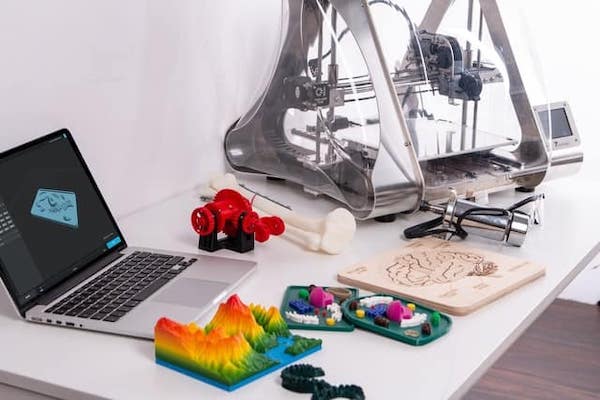3D printing: the benefits and applications of additive manufacturing technology

3D printing, also known as additive manufacturing, is a revolutionary technology that allows users to create three-dimensional objects by adding material layer by layer. This technology has opened up many possibilities in various industries, including healthcare, automotive, aerospace, and more.
Some of the benefits of 3D printing include:
Cost-effectiveness: 3D printing allows for the creation of complex shapes and designs without the need for expensive tooling or molds. This makes it ideal for small-scale production runs and prototyping.
Customization: 3D printing allows for the creation of highly customized products tailored to individual needs and preferences. This is especially useful in industries like healthcare, where personalized medical devices and implants can be created.
Time-saving: Traditional manufacturing processes can be time-consuming, with long lead times between design and production. 3D printing, on the other hand, can produce parts quickly and efficiently, reducing lead times and allowing for faster iteration.
Sustainability: 3D printing produces less waste than traditional manufacturing processes, as only the required amount of material is used. Additionally, 3D printing can enable the production of more sustainable products, such as lightweight parts that reduce fuel consumption in transportation.
Applications of 3D printing include:
Medical: 3D printing is increasingly used in the healthcare industry to create customized medical implants, prosthetics, and even organs. This allows for a more personalized approach to healthcare and can greatly improve patient outcomes.
Aerospace: 3D printing is used to create lightweight and complex parts for aircraft and spacecraft, reducing weight and improving fuel efficiency. This technology is also used for rapid prototyping and testing of new designs.
Automotive: 3D printing is used in the automotive industry to create prototypes, custom parts, and even entire vehicles. This technology allows for faster iteration and customization, improving the design process and reducing costs.
Architecture: 3D printing is used in architecture to create intricate models and prototypes of buildings and structures. This allows architects and designers to test and refine their designs before construction, reducing errors and improving efficiency.
Education: 3D printing is increasingly used in education to teach students about design, engineering, and manufacturing. This technology allows students to create physical models of their designs, promoting hands-on learning and problem-solving skills.
Art and fashion: 3D printing is used in the creation of unique and intricate art pieces, sculptures, and jewelry. Additionally, 3D printing has enabled the creation of custom-fit fashion and accessories.
Food: 3D printing is used to create edible designs, such as chocolate sculptures and sugar decorations. This technology is also used in the development of new food products and packaging.
In conclusion, 3D printing has numerous benefits and applications across various industries. As technology continues to evolve, it is expected that 3D printing will become even more widespread and innovative.


